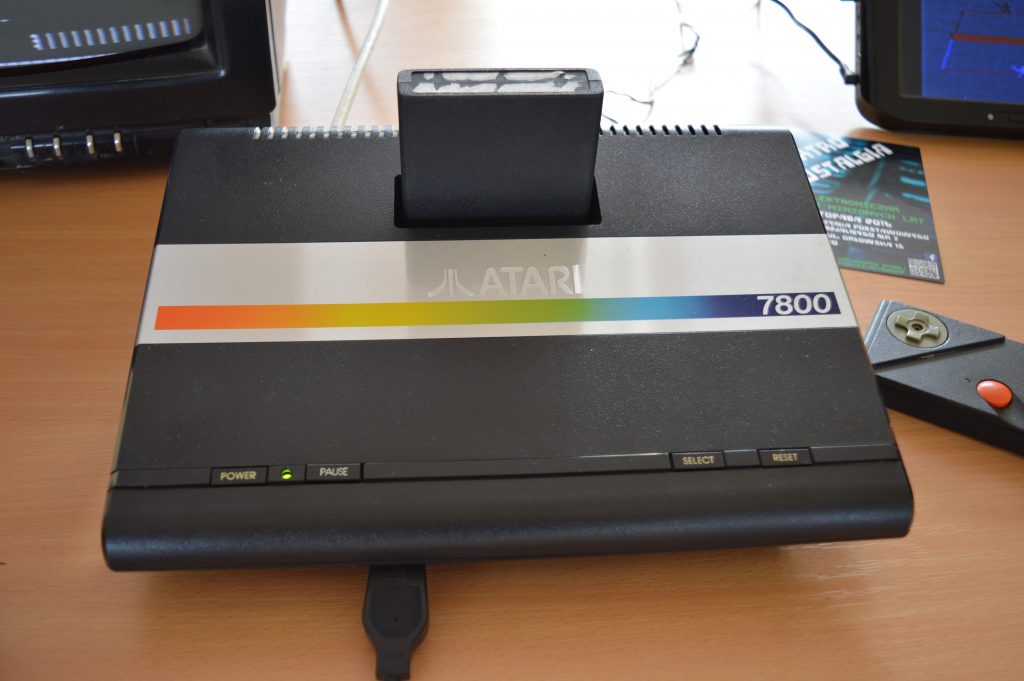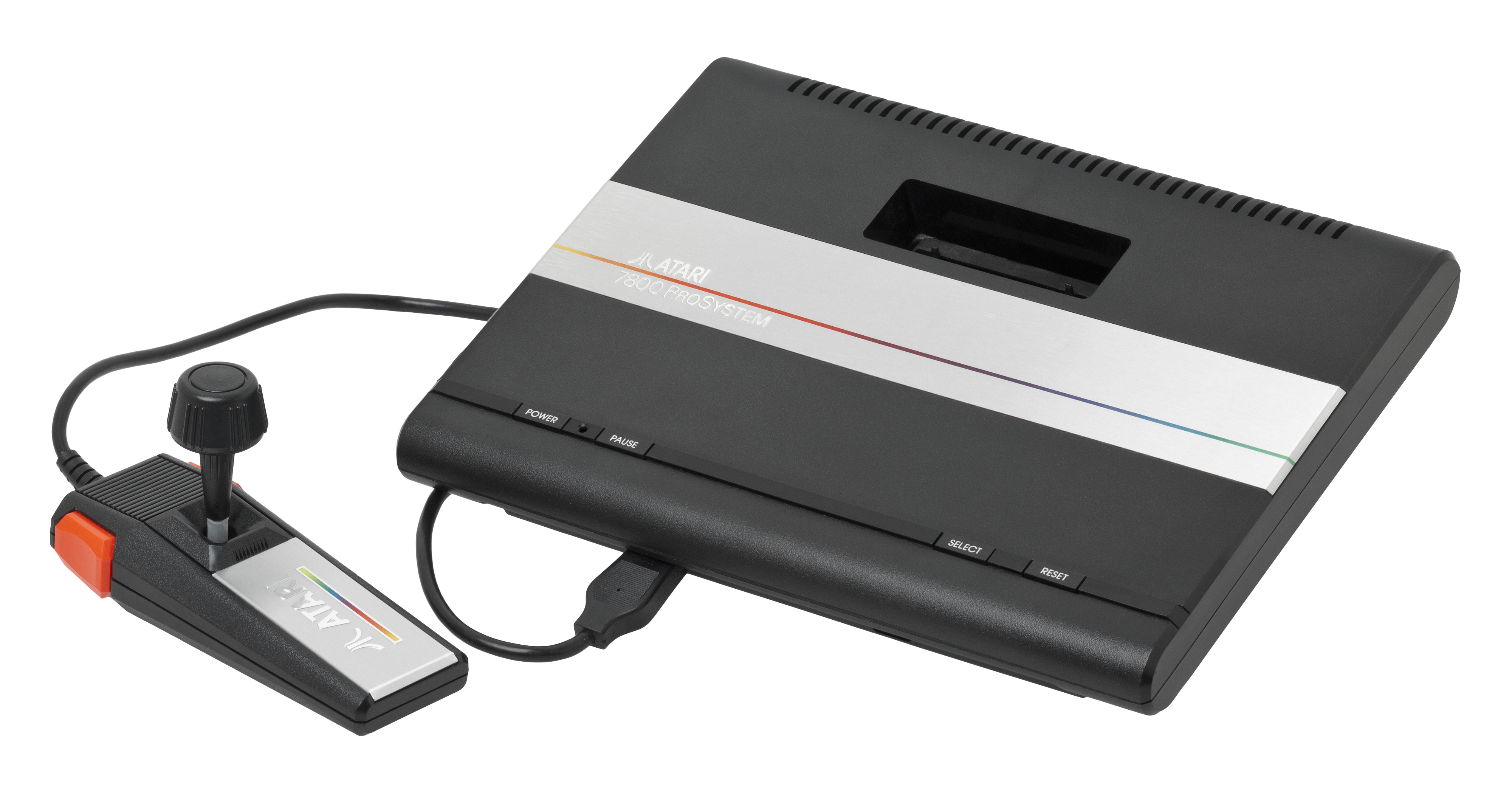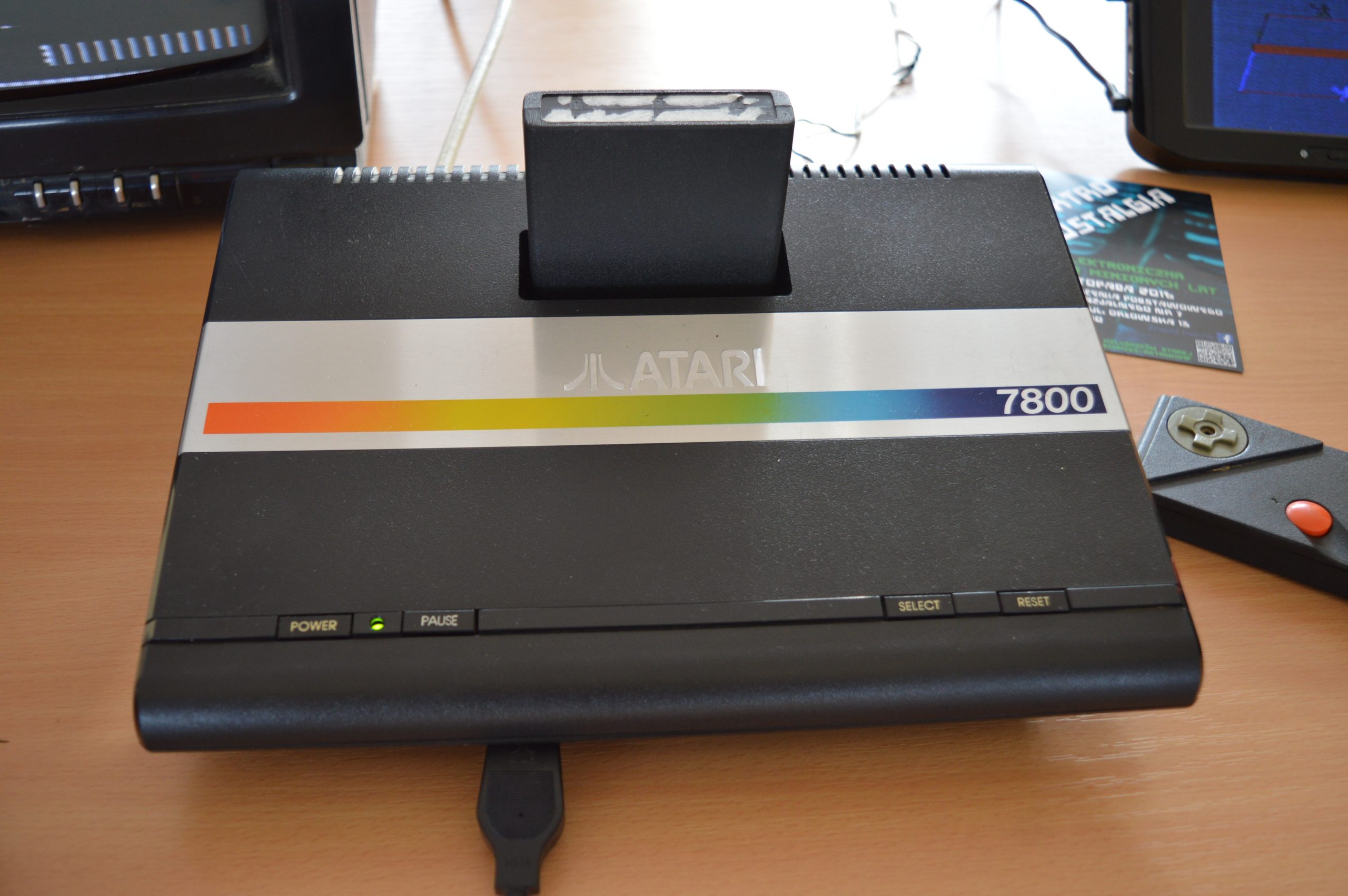CPU: 6502C at 1.79MHz (Dropping to 1.19MHz when the TIA chip is accessed).
RAM: 4K
ROM: 4K BIOS. 48K in cartridges.
Graphics: MARIA custom chip. 160×240 (160×288 PAL). 25 colour palette out of 256 colours. Graphics clock @ 7.16 MHz
Sound: TIA, as found in the 2600. Value
£20 – £50, depending on condition, whether boxed, bundled games etc.
£20 – £50, depending on condition, whether boxed, bundled games etc. Brief History
Following the failure of the 1982 launched 5200 Super System, Atari’s original attempt to supersede the now flagging 2600, Atari commissioned a survey to discover exactly what it was that gamers wanted in an Atari games console. The results were telling.
People wanted compatibility with the 2600, a reasonable price, expandability, and good ports of their favourite modern arcade games (in much the same way as the 2600 had handled older arcade faves). Originally to be called the 3600, the name was changed, as this sounded like a step down from the 5200. Instead, since the new machine combined similar graphical capabilities to the 5200, and backwards compatibility with the 2600, Atari simply added the numbers of their two previous systems, and came up with the name “7800 Pro System”. So in 1984, the new system had been announced and was ready for launch, when Atari’s owner, Warner Communication announced it was to sell the Atari home systems division of the company. The new owner, Jack Tramiel, had little interest in consoles, favouring home computers, and so the 7800, while not completely canned, was sidelined.
Retailers were forced to sell the 7800 at cost ($50), and so were obviously very reluctant to stock the machine, and consequently, very few 7800s were sold at this time. By 1986, the market had changed. Nintendo and Sega were dominating the consoles market with the NES and Master System, and Tramiel decided that perhaps there was a place for the 7800 after all.
The system was relaunched, but with minimal support, or promotion, and games that simply couldn’t compete with those of the Japanese systems. Predictably, though sales were fair by Atari standards, the system was doomed to the status of ‘also ran’, and in 1992, production of the 7800 ceased. Hardware
For the 7800’s design, Atari turned to GCC, a company comprised of college students with a reputation for hacking Atari arcade boards and updating the games.
Following failed attempts to prevent GCC’s hacking activities through the law courts, Atari decided they would be better served by making use of the students’ talents, and hired them. Backwards compatibility and sound were taken care of by incorporating the original, Jay Miner designed, TIA chip, while the improved graphics capabilities came from the new, GCC designed, MARIA chip. If games required enhanced sound, the POKEY audio chip could be included in game cartridges. In the end, only 2 games, Ballblazer and Commando, made use of the POKEY chip.
Software encryption was included to prevent unauthorised (often pornographic) games from accessing the MARIA chip, so any software not recognised by the system only had access to the original 2600 hardware.
An expansion port was included to enable the use of peripherals and add-ons, though in the end, none were ever produced.
The design of the system’s case was simply a variation of the case used for the Japanese version of the 2600.



